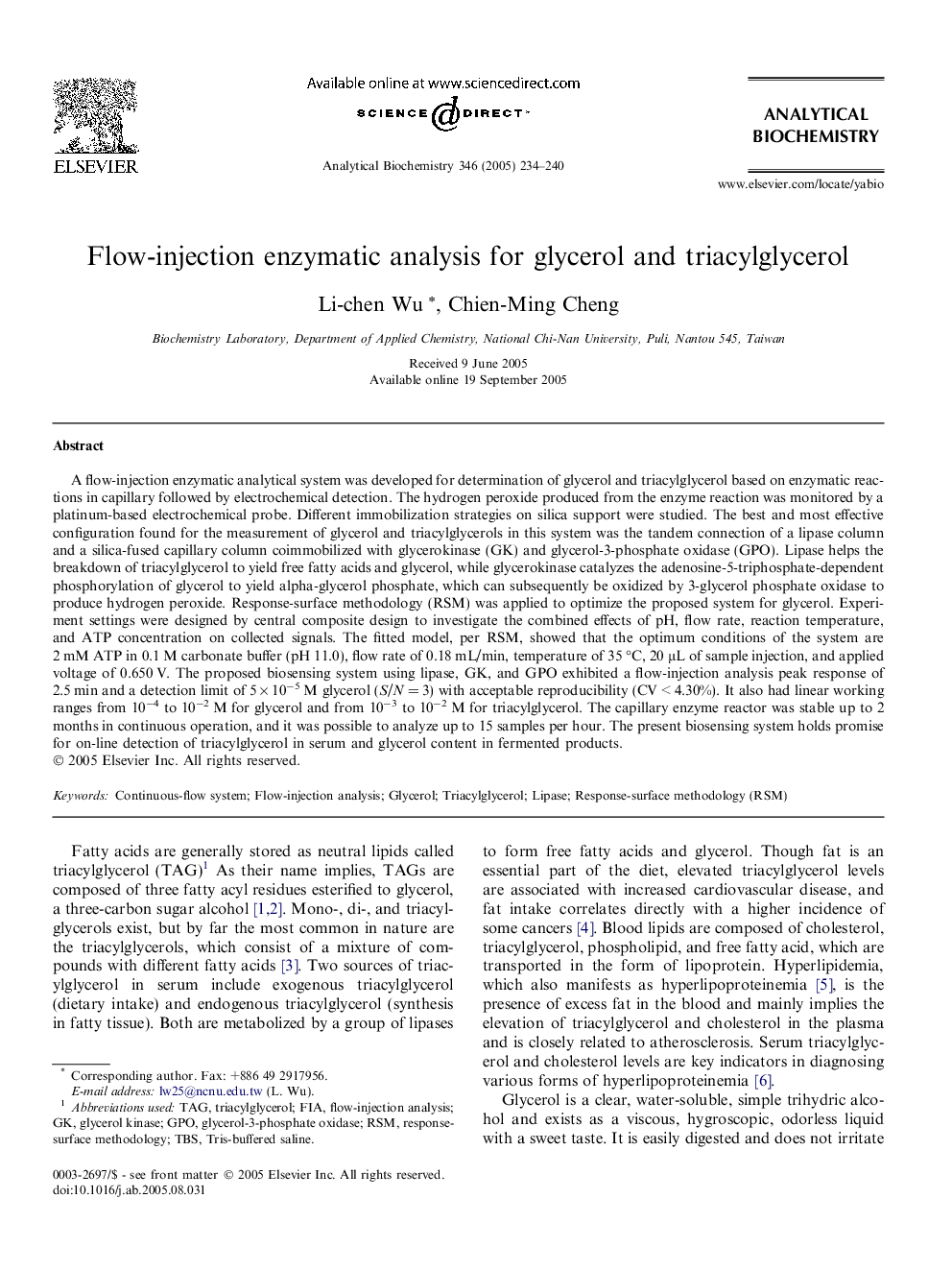| کد مقاله | کد نشریه | سال انتشار | مقاله انگلیسی | نسخه تمام متن |
|---|---|---|---|---|
| 10536227 | 962046 | 2005 | 7 صفحه PDF | دانلود رایگان |
عنوان انگلیسی مقاله ISI
Flow-injection enzymatic analysis for glycerol and triacylglycerol
دانلود مقاله + سفارش ترجمه
دانلود مقاله ISI انگلیسی
رایگان برای ایرانیان
کلمات کلیدی
موضوعات مرتبط
مهندسی و علوم پایه
شیمی
شیمی آنالیزی یا شیمی تجزیه
پیش نمایش صفحه اول مقاله

چکیده انگلیسی
A flow-injection enzymatic analytical system was developed for determination of glycerol and triacylglycerol based on enzymatic reactions in capillary followed by electrochemical detection. The hydrogen peroxide produced from the enzyme reaction was monitored by a platinum-based electrochemical probe. Different immobilization strategies on silica support were studied. The best and most effective configuration found for the measurement of glycerol and triacylglycerols in this system was the tandem connection of a lipase column and a silica-fused capillary column coimmobilized with glycerokinase (GK) and glycerol-3-phosphate oxidase (GPO). Lipase helps the breakdown of triacylglycerol to yield free fatty acids and glycerol, while glycerokinase catalyzes the adenosine-5-triphosphate-dependent phosphorylation of glycerol to yield alpha-glycerol phosphate, which can subsequently be oxidized by 3-glycerol phosphate oxidase to produce hydrogen peroxide. Response-surface methodology (RSM) was applied to optimize the proposed system for glycerol. Experiment settings were designed by central composite design to investigate the combined effects of pH, flow rate, reaction temperature, and ATP concentration on collected signals. The fitted model, per RSM, showed that the optimum conditions of the system are 2 mM ATP in 0.1 M carbonate buffer (pH 11.0), flow rate of 0.18 mL/min, temperature of 35 °C, 20 μL of sample injection, and applied voltage of 0.650 V. The proposed biosensing system using lipase, GK, and GPO exhibited a flow-injection analysis peak response of 2.5 min and a detection limit of 5 Ã 10â5 M glycerol (S/N = 3) with acceptable reproducibility (CV < 4.30%). It also had linear working ranges from 10â4 to 10â2 M for glycerol and from 10â3 to 10â2 M for triacylglycerol. The capillary enzyme reactor was stable up to 2 months in continuous operation, and it was possible to analyze up to 15 samples per hour. The present biosensing system holds promise for on-line detection of triacylglycerol in serum and glycerol content in fermented products.
ناشر
Database: Elsevier - ScienceDirect (ساینس دایرکت)
Journal: Analytical Biochemistry - Volume 346, Issue 2, 15 November 2005, Pages 234-240
Journal: Analytical Biochemistry - Volume 346, Issue 2, 15 November 2005, Pages 234-240
نویسندگان
Li-chen Wu, Chien-Ming Cheng,